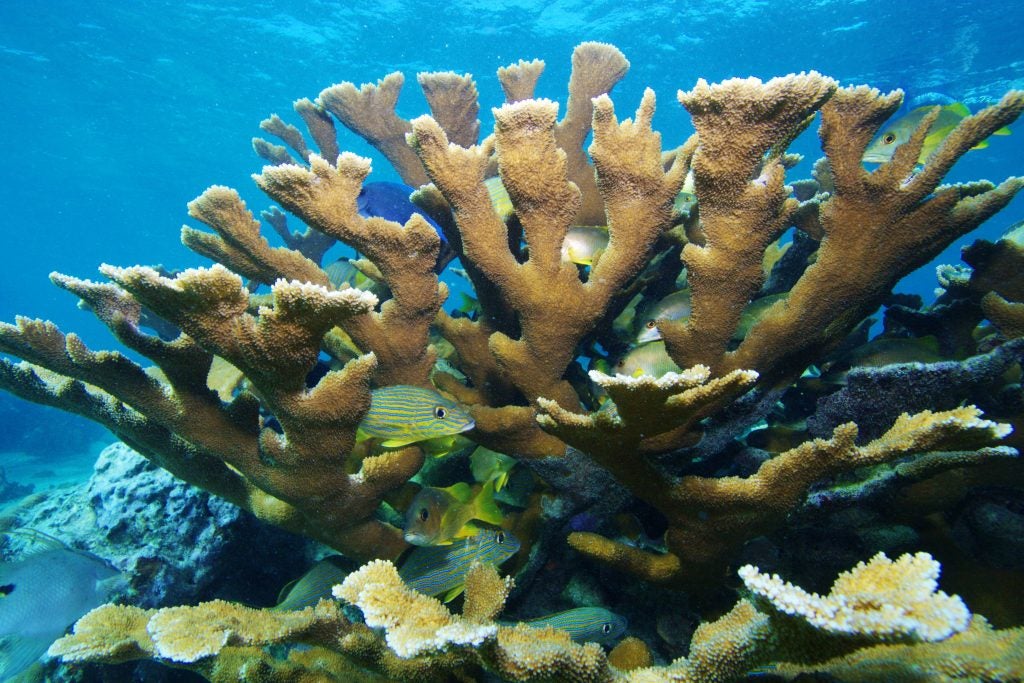
Nearly three years ago, I broke with conventional wisdom to note that there was ample reason to have hope for coral reefs despite the very obvious threats associated with global climate change, including both warming and acidification. Since then, researchers — and coral-lovers of all stripes from all over the world — have made important progress in identifying ways to sustain corals against difficult odds.
By far the most important conclusion is that there is no single correct pathway forward. Rather, there are many different possibilities that, taken together, could help provide pathways for corals and coral reef conservation, providing we also achieve significant reductions in projected greenhouse gas emissions. Let me walk you through some of the most promising discoveries.
The key to understanding these pathways forward is in first unraveling the complex symbiosis between coral animals and their internal microalgal symbionts: much like the human gut relies on bacteria for health, so too do corals rely on their internal comrades. All corals host these so-called zooxanthellae, key partners in life in nutrient-poor tropical oceans, but also the elements that give coral colonies most of their color. In fact, “bleaching” occurs when these microalgae are expelled during times of stress, such as during warming events, when corals lack adequate oxygen to maintain them.
So, what solutions might work to keep corals healthy? These new approaches break down into three different pathways:
- finding and protecting places least affected by heating;
- finding and exploiting corals that are most resistant to heating and acidification; or
- actively working with corals and their symbionts to create and spread “supercorals” that survive better than would be expected.
Natural “cool spots” can provide at least temporary refuges from the warming oceans that induced the world-record coral bleaching event from 2014-2017, which led to unprecedented coral mortality in many spots previously thought to be largely protected from such events. A worldwide study led by the Wildlife Conservation Society (and funded by Bloomberg) identified candidate places that may remain cooler as waters warm. Similarly, there are likely categories of sites that may be less vulnerable to acidification, especially those with high natural supplies of carbonate or bicarbonate buffers, which will tend to be less influenced by ocean-wide acidification.
Of course, even these least heat-prone sites are unlikely to survive coming changes if emissions are not cut — and quickly — to levels that moderate ocean temperature increases.
Next, natural “hot spots” have also now been determined to house coral forms that demonstrate increased resilience in the face of warming conditions. These corals often represent genetic variations of corals coupled with microalgae that together are more tolerant of higher temperatures than expected. In fact, stunning new work in Australia shows that at least some corals subjected to unusual heat can pre-package more resistant zooxanthellae with their eggs and pass along improved resistance to offspring corals. Similar research from Kaneohe Bay in Hawaii has found unexpectedly robust corals growing under trying circumstances in polluted waters. I expect that similar opportunities will be revealed as scientists look for and find acidification-resistant forms.
Active interventions, in the lab and in the field, can result in the development and then spread of heat-resistant coral forms. This work builds on a long history of coral conservation, where “corals of opportunity” (broken off by storms or accidents) can be superglued onto stable structures, where their more-rapid growth can be used to repopulate depleted areas. The logical next step is to build “coral farms” where that rapid growth can be exploited to build much larger capacity for repopulation after bleaching and mortality events. If those farms are populated with more heat-resistant forms (with the right coral and microalgal genetics), then our capacity to keep coral reefs working will be greatly enhanced.
All of this is good news, especially when it is combined with additional work to expand knowledge of how effective management of coral reef ecosystems can help reduce vulnerability. New work from the Coral Reef Alliance has demonstrated how maintaining diverse reef habitat can actively help corals adapt on their own. Our own work with partners in Belize, Cuba, Indonesia and elsewhere is testing how to get the most from science-based marine protected area networks coupled to rights-based fishery management systems. The latest wrinkle is to leverage new science that shows how improved performance of coral reefs is tied to enhanced finfish abundance.
So, where do we go from here? All of these threads are critically important and must be aggressively pursued. There are new research avenues to explore, including understanding and potentially manipulating the further symbioses between corals and their associated bacteria and viruses. In addition, more work is required in how to manipulate relationships between corals and their associated macrofauna and macrophytes, including through fisheries management. Finally, if we are serious about supporting reef ecosystems and the livelihoods of the hundreds of millions of people that depend upon them, then new investments will have to be made, both for reef management and for the enhancement of associated mangroves and seagrass ecosystems. Those investments — in order to be fair — must be covered by the developed world that caused this problem in the first place.
We know the health of corals and the impacts of climate change are inextricably linked. That’s why we must move as quickly as possible to reduce our emissions by transitioning to a 100% clean future where we generate zero net pollution by 2050. Doing so may just buy us the precious time we need to find the solutions to coral health that we know are out there. Because I want my grandchildren — and theirs — to enjoy the world of wonder beneath the waves that coral reefs provide.
By Doug Rader
Enviroshop is maintained by dedicated NetSys Interactive Inc. owners & employees who generously contribute their time to maintenance & editing, web design, custom programming, & website hosting for Enviroshop.
